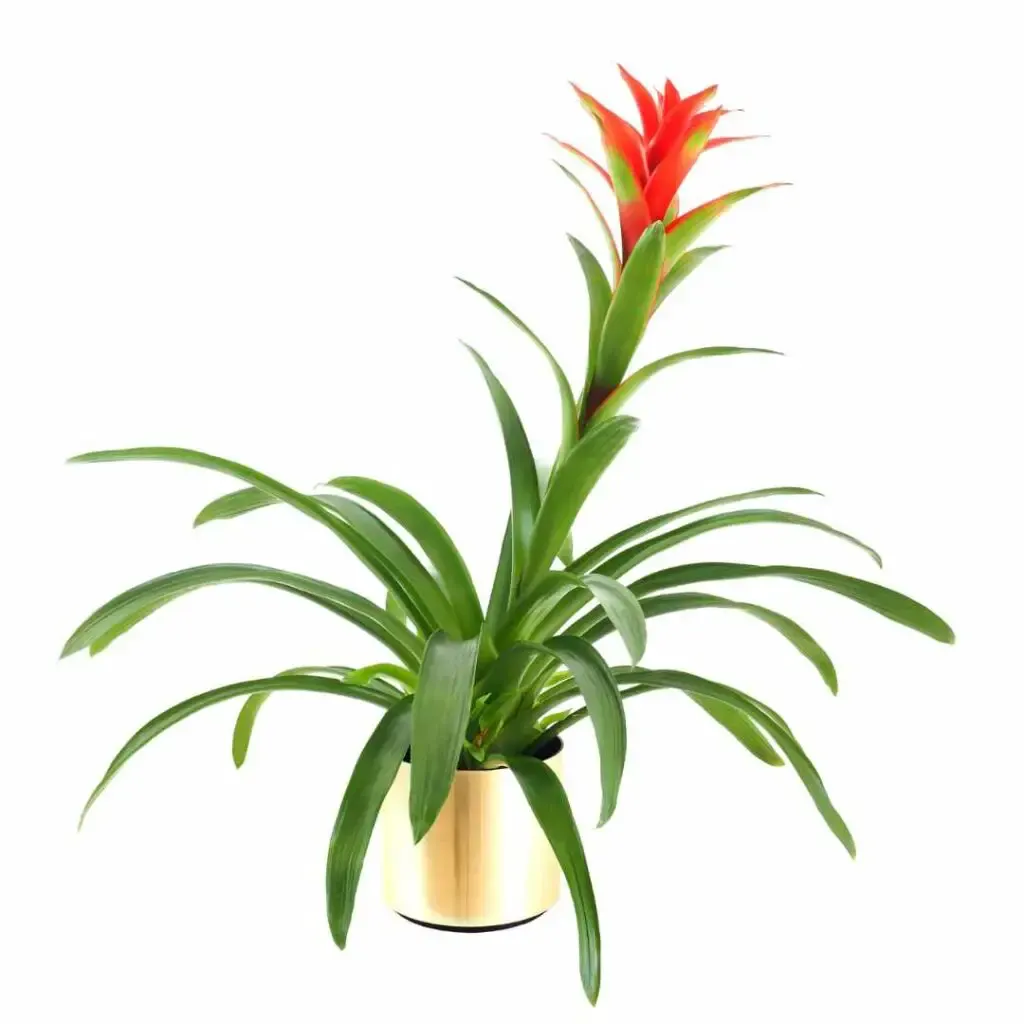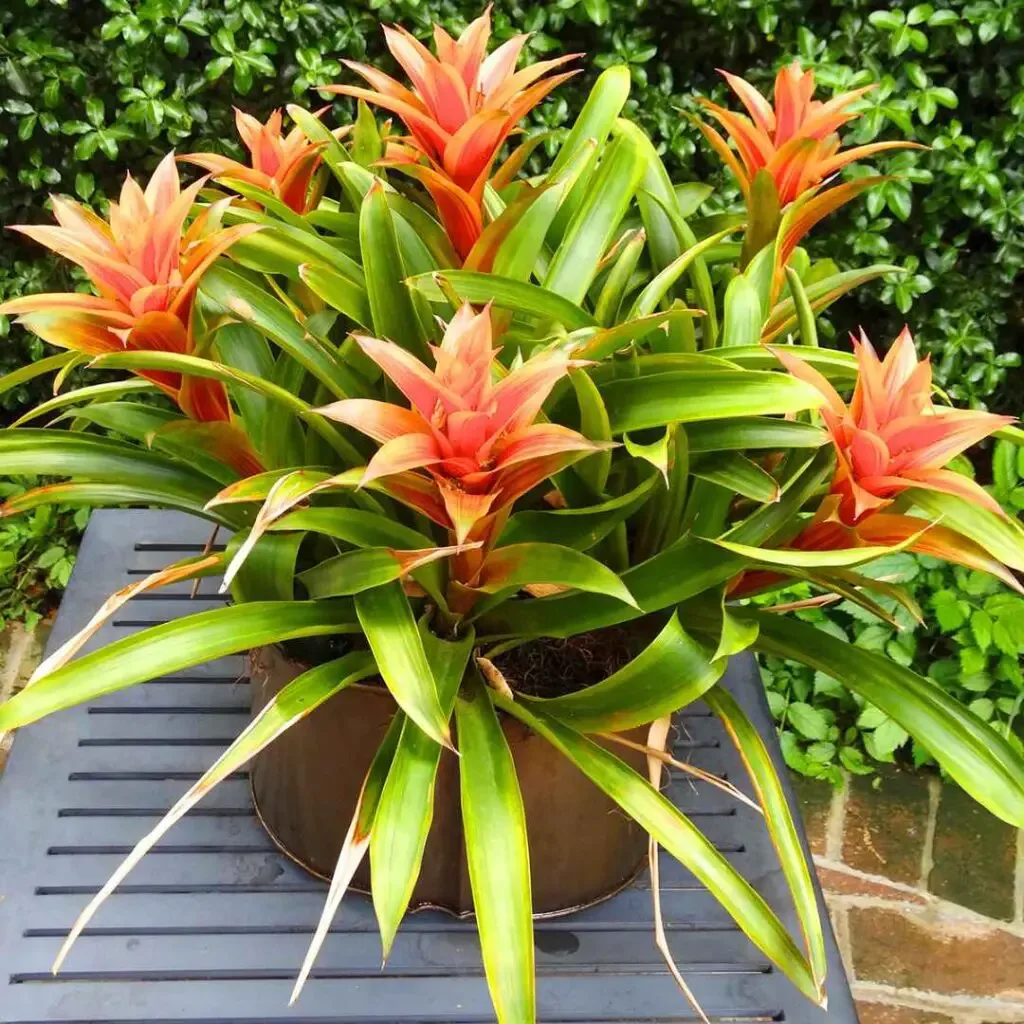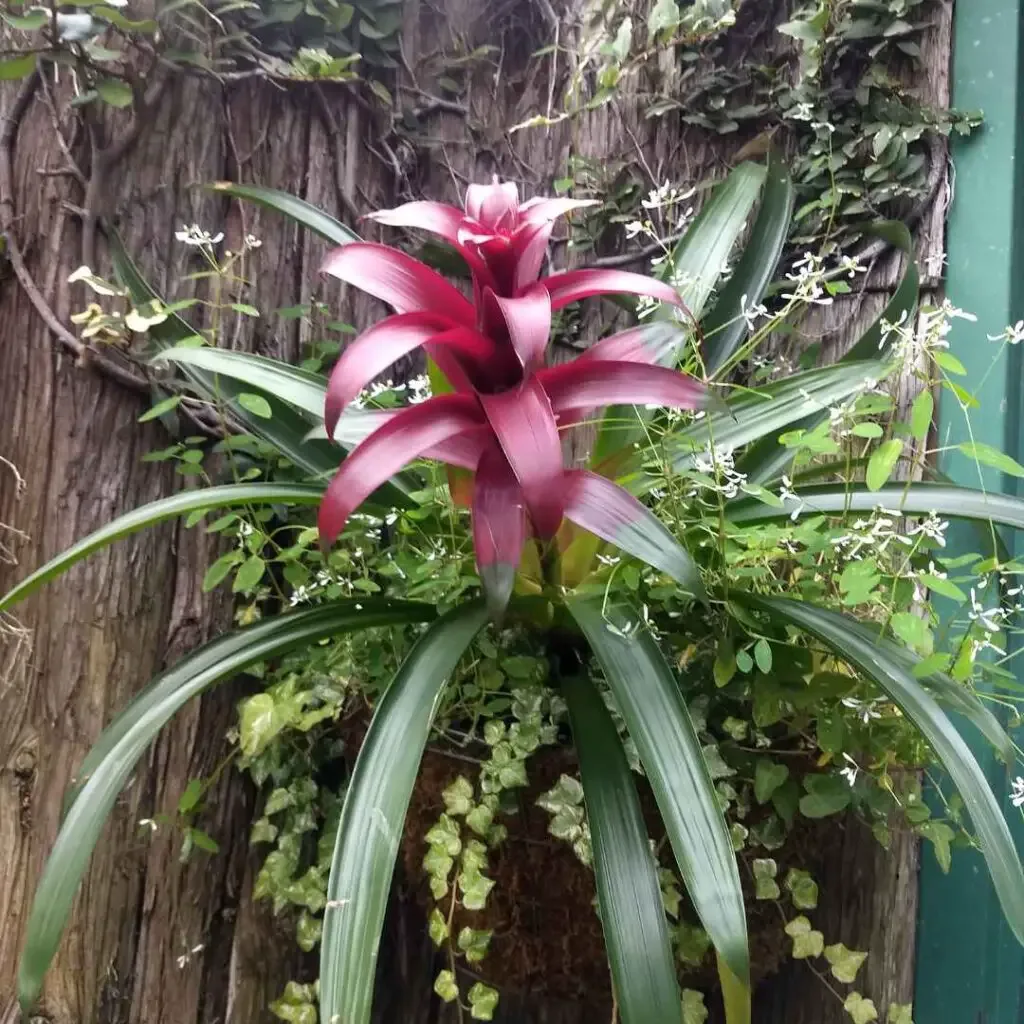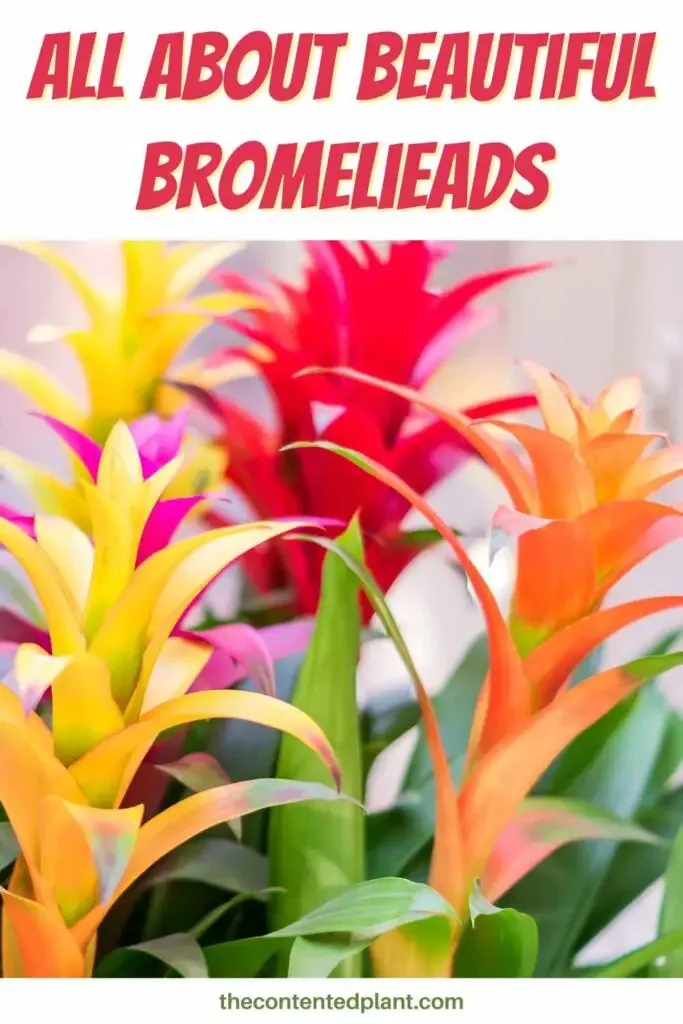The Bromeliad plants are another beautiful epiphyte, also known as an air plant, that can grow with little to no soil on the sides of trees or other organic material. Most commonly they are grown in shallow soil when kept as houseplants. Although these tropical plants look high maintenance, and even a bit intimidating, they are actually very easy to grow and thrive in most average home conditions.
Bromeliads are known for their wide variety of showy, colorful flowers which makes them an attractive option for anyone looking to bring color and texture to their home or garden. Sadly, these plants only flower one time during their lifespan, after which they produce young offshoots of new plants.
There are many different color variations and patterns of Bromeliads available including stripes, bands, and spots; even some multicolored leaves of red, yellow, purple and orange. This plant is a member of a large family, and not all of the species require the same care. Plants found in the Guzmania, neoregelia, and Vriesea genera are considered beginner friendly options to start with if you are new to this plant.

Blooming or flowering can be tricky to achieve
Bromeliads do require very specific care and conditions in order to flower or bloom. This is likely their most challenging aspect, and one that could take time for you to master since it is dependent on the environment they live in.
These plants are also very slow growers, and the flowering time can vary depending on the type or species that you have. Their bloom time is also directly tied to all aspects of care and environment including day length, watering, temperature and humidity.
How to get your Bromeliad to bloom
Above all else, the conditions need to be as ideal as possible, the plant needs to be matured enough (which will take time) and patience is required. However, there has been some research done about possibly being able to force Bromeliads to bloom by exposing them to ethylene gas. This can be done by way of decomposing apples, the method is as follows.
- Drain the plant of any excess water so that root rot does not occur
- Seal your bromeliad in a clear plastic bag with an apple
- Leave the plant sealed in the bag with the apple for up to 10 days
- As the apple decomposes it will release ethylene gas which may cause the plant to spike, leading to blooming
Growing Bromeliads outdoors
These plants are tropical, so they will require a warmer climate and protection during the winter months if the temperatures drop too far. They will thrive in shallow containers with light soil on a patio or small garden area that receives shade and protection from the sun.
Due to the air and sunshine, containers will dry out much faster than plants that live in ground which means you will need to water them more frequently. The containers need to have good drainage as Bromeliads have small root systems and are prone to root rot.

A look at the Bromeliad
Though there are many different species of bromeliad, and some do require much more specific care and environmental conditions than others in order to thrive; they are a hardy plant and do well under the same general care.
| Light + Sun | They thrive in partial, dappled sunlight and need protection from full sun |
| Watering | Moist, but not soggy soil; allow it to drain in between waterings and use demineralized water |
| Soil | Acidic, well draining soil that is airy and light like what Orchids needs |
| Containers | Small, shallow and well draining |
| Growth | Varies, but some can reach 18″ in height though they are slow growers |
| Bloom + Flowers | Varies only blooming once; flowers can be pink, red, orange, green, and purple with variation |
| Fertilizer | Sparingly and very light during the growing season |
Bromeliads will be a long term commitment
These plants are slow growers, most requiring 1-3 years before reaching full maturation and blooming potential. They will bloom only once during their lifespan, but the young offshoots that follow can be grown into new plants for your home or garden.
Most species of Bromeliad can live 2-5 years before the mother plant dies, which means they will require patience and care for an extended period. If you source a plant that you truly love, either the bloom color or variegation patterns, you can propagate the plant to grow new plants over time.
Does the Bromeliad get infested?
Nearly all plants can become subjected to common pest infestation with mealybugs, aphids, scale, and white fly. It’s important to regularly inspect your bromeliad for signs of pest activity and take action quickly if you see any.
You can spray and wipe down the leaves of your plant with a mixture of gentle soap and water to rid the plant of any potential pests.
What soil is best for my Bromeliad?
Soil that is fast draining and light, similar to other epiphyte plants such as Orchids. A mixture of 2/3 peat moss and 1/3 sand soil is a great bed. Things like charcoal, soil-less potting mix, or a mix specifically curated for Orchid plants can also be used.
Some bromeliads can even be grown with little to no soil, and mounted on an organic plank or board just like the Staghorn Fern. Not all bromeliads will thrive in this lifestyle, so do some research on the specific plant that you have sourced to learn how it will best grow.

Temperature and Climate are important
Bromeliads are topical and will thrive in similar conditions of warm temperatures, humid air, and shade coverings. Many of these plants are rather hardy and they can tolerate fluctuations in temperatures to a degrees, but they may be affected by living in less than ideal conditions.
Outdoors these plants need temperatures between 60-85 degrees F, and should not be left in temperatures below 40 degrees F. It is best to bring them indoors if temperatures will drop too low. Indoors, bromeliads will require 40%-50% humidity and partial dappled sunlight. Exposure to direct sunlight will likely burn the leaves of the plant, and can dry out the soil too much.
Light exposure will have a strong affect on blooming
The balance of sunlight for bromeliads can be difficult to find depending where you live. They need shade and only partial exposure, but too little light and the plant will not bloom. This will also change depending on the type of bromeliad you have; soft, thin leaves require less light while plants with strong, upright leaves need much more sun exposure.
If you are working hard to get your plant to bloom, increasing the sunlight exposure can help with this as long as the other living conditions are ideal and the plant is within it’s necessary maturity.
How and when do you propagate bromeliads?
Propagation by sourcing offshoots from the mother plant is the most successful way to grow yourself a new bromeliad. Once the mature plant has flowered, you will notice multiple bracts that surround the blooms. These bracts are visually eye catching and long lasting, but when they die off propagation can be done.
- Once the flowers start to die off, the mother plant itself will also slowly die over the next several months
- As this process continues the dying mother plant will send up several ‘pups’ or offshoots
- Once the offshoots reach roughly 1/3 the size of the mother plant they can be carefully removed
- The shoots should have some roots attached and they can be planted in new, smaller containers
- If the shoots have very little to no roots don’t worry, they can grow them over time in their new container
- It will take a lot of time for the plants to mature as they are very slow growers, but care for them as usual and they will grow
More Flowering Plants Similar to the Beautiful Bromeliad:
- The Lipstick Plant
- The Orchid
- Birds of Paradise
- The Peace Lily
- Goldfish Plant Care Guide
- Christmas Cactus
Watch our video For Recommendations For Beginner Houseplants
Related Content:
Follow Us:
Find us on YouTube, Instagram , Pinterest and TikTok! We love to Plant chat. We also comment, like and occasionally share your content to our daily stories. We’d love to see your plants. Share your joy in your houseplants. Happy Planting!

